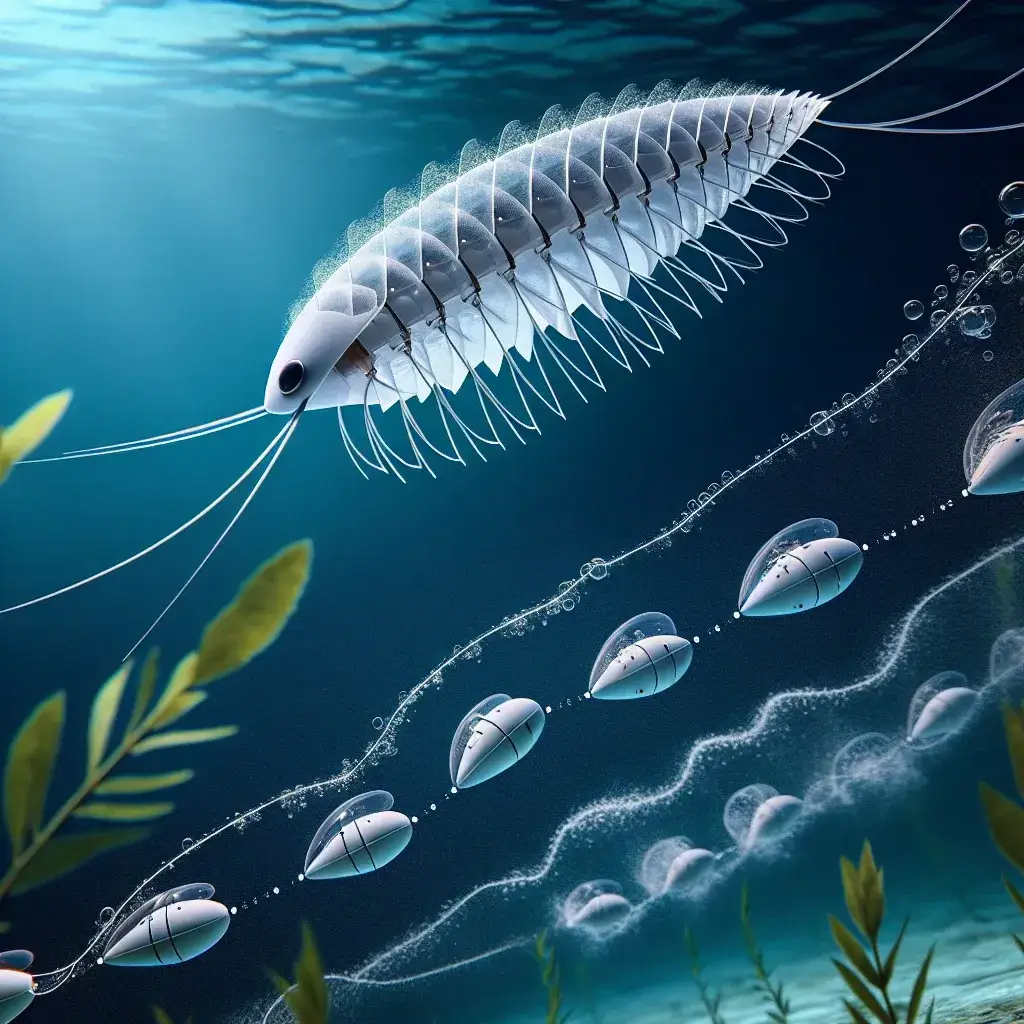Introduction
In the realm of biomimicry, few organisms inspire innovation quite like copepods. These tiny, shrimp-like crustaceans are the most abundant zooplankton in the aquatic environment, renowned for their exceptional swimming abilities. As researchers delve deeper into the mechanics of copepod locomotion, they uncover principles that can significantly enhance the efficiency and effectiveness of aquatic robots. This article explores how understanding copepod movement can lead to breakthroughs in robotic design, contributing to advancements in ocean exploration, environmental monitoring, and underwater robotics.
The Fascinating World of Copepods
Copepods belong to the subclass Copepoda, and they are found in a variety of aquatic environments, from oceans to freshwater bodies. Their size generally ranges from 0.2 to 20 millimeters, yet they possess remarkable adaptations that allow them to thrive in diverse conditions.
Physical Characteristics
Copepods have streamlined bodies that reduce drag as they swim. Their locomotive appendages, primarily the antennae, are highly specialized for rapid movement. The unique structure of their legs and body allows them to perform agile maneuvers, which are crucial for avoiding predators and hunting for food.
Locomotion Mechanics
Copepods employ a distinctive swimming technique known as “power stroke” and “recovery stroke.” During the power stroke, they use their antennae to propel themselves forward at impressive speeds, while the recovery stroke allows them to efficiently regain their position in the water column. This dual-phase movement maximizes their energy efficiency, allowing them to cover large distances with minimal effort.
Biomimicry: Nature as an Inspiration
The study of copepod locomotion has sparked interest in the field of biomimicry, where engineers and scientists look to nature for solutions to complex problems. By understanding how copepods efficiently navigate through water, researchers can design aquatic robots that mimic these movements.
Design Principles Inspired by Copepods
- Streamlined Form: Aquatic robots designed with a streamlined body can reduce drag and increase speed, similar to copepods.
- Flexible Appendages: Using flexible materials for robotic limbs allows for agile movements akin to the copepod’s antennae.
- Energy Efficiency: By mimicking the copepod’s power and recovery strokes, robots can optimize their energy consumption.
- Responsive Control Systems: Integrating advanced control algorithms inspired by copepod neurology can enhance maneuverability.
Applications of Copepod-Inspired Aquatic Robots
As researchers continue to unlock the secrets of copepod locomotion, various applications for these innovations are emerging:
1. Environmental Monitoring
Robotic systems modeled after copepods can traverse large water bodies, gathering essential data on water quality, temperature, and biodiversity. Their ability to navigate complex underwater terrains makes them ideal for monitoring ecosystems.
2. Search and Rescue Operations
In situations where traditional vessels cannot access, copepod-inspired robots can efficiently maneuver through debris in search and rescue missions. Their compact size and agility allow them to navigate tight spaces.
3. Marine Research and Exploration
These robots can assist scientists in studying marine life by collecting samples and capturing high-resolution images of underwater habitats without disturbing the environment.
Challenges and Future Directions
While the potential of copepod-inspired aquatic robots is promising, several challenges remain:
1. Material Limitations
Creating lightweight yet durable materials that can withstand underwater pressure and corrosive environments is a significant hurdle in robotic design.
2. Power Supply
Developing efficient power sources that can sustain long periods of operation in aquatic settings is another challenge. Researchers are exploring bio-inspired energy systems that mimic natural processes.
3. Control and Navigation
Enhancing the robots’ autonomy and navigational accuracy is critical. This involves advanced algorithms and machine learning techniques to interpret environmental data.
Conclusion
The locomotion of copepods serves as a beacon of inspiration for the future of aquatic robotics. By leveraging the evolutionary adaptations of these tiny creatures, engineers and researchers can create more efficient, agile, and effective underwater robots. As technology advances, the partnership between nature and innovation will undoubtedly lead to exciting developments in marine exploration, environmental conservation, and beyond.
References
For further reading on this fascinating subject, consider exploring articles on Scientific American that delve into the biology and mechanics of copepod locomotion, as well as their ecological significance.

